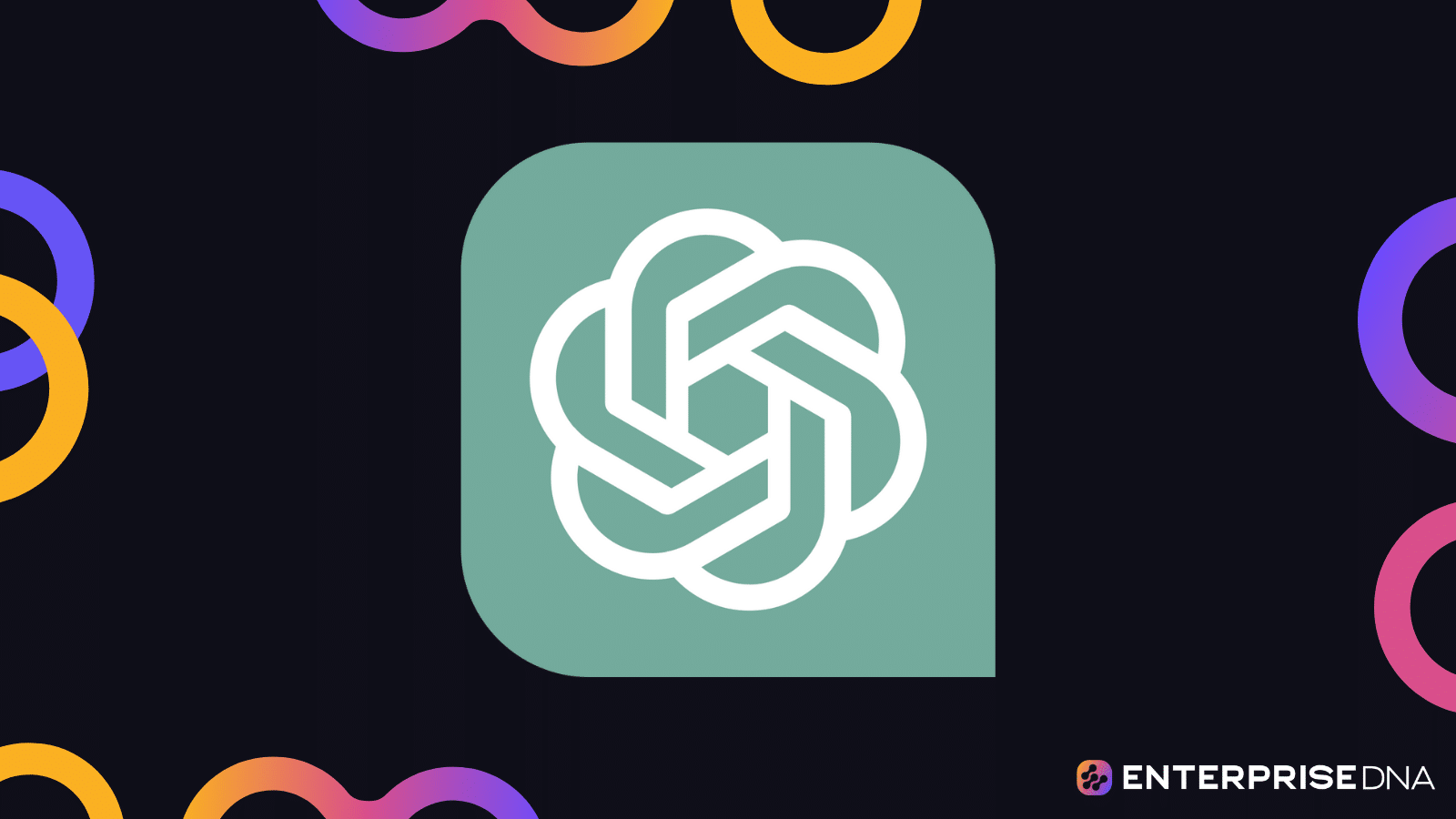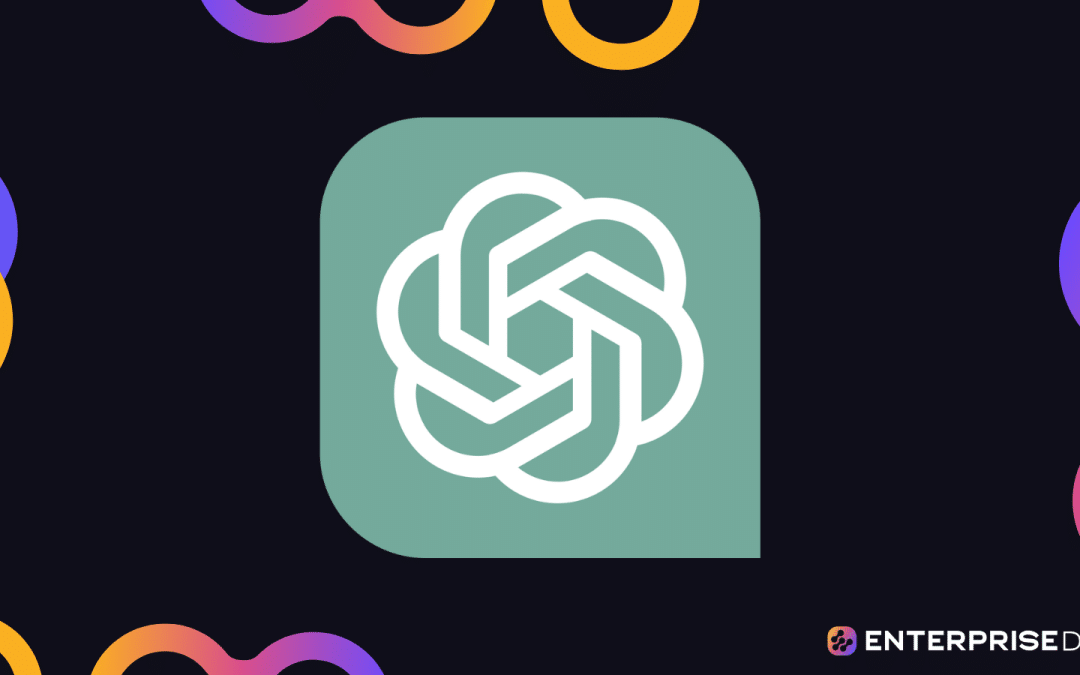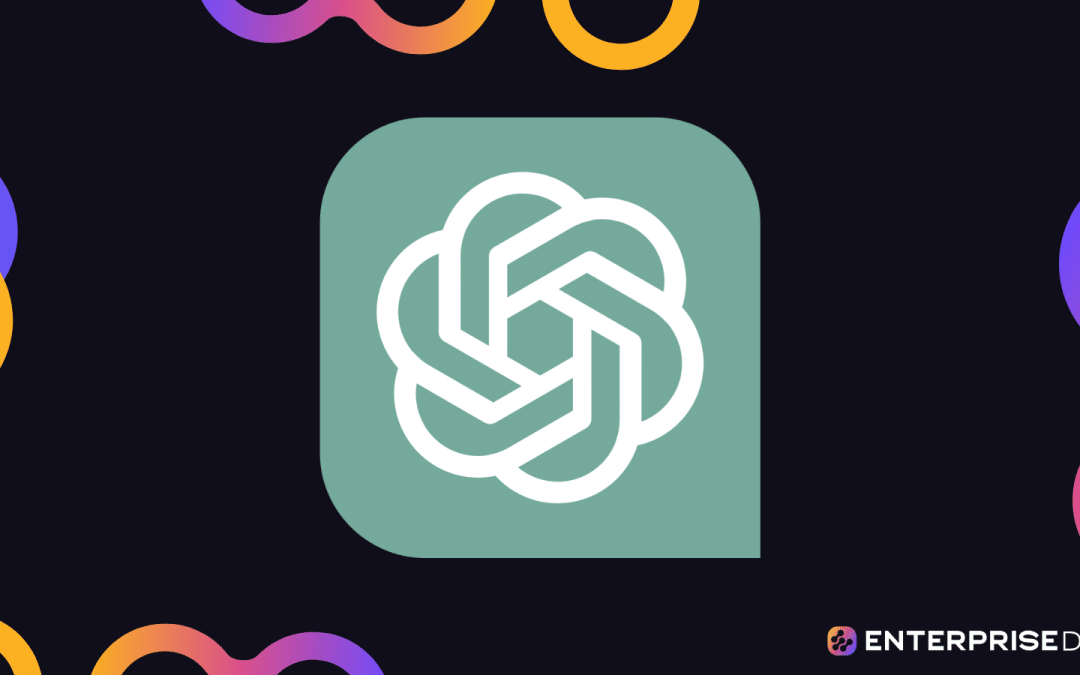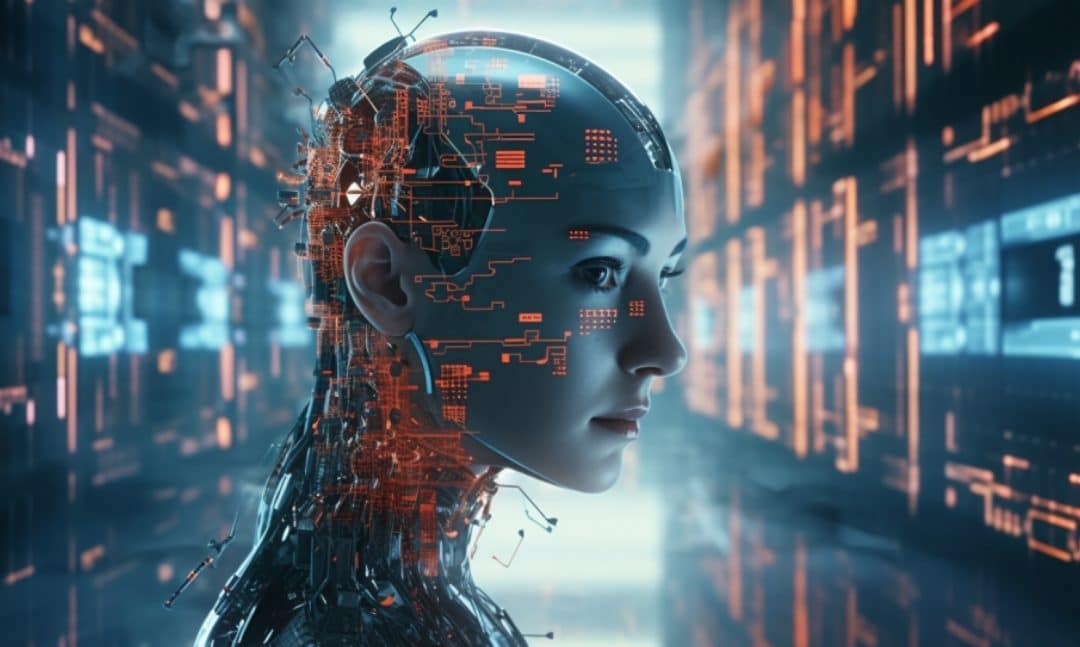The crazy progress artificial intelligence (AI) has made lately has caused a stir in pretty much every industry you can think of. One AI superstar is ChatGPT, an AI chatbot that’s so cutting-edge, it’s practically doing linguistic backflips!
ChatGPT is an advanced AI language model developed by OpenAI. It represents a significant leap in natural language processing, enabling AI to generate coherent, contextually relevant, and almost human speech-like text responses in a conversational manner.
This article will explore the origins of ChatGPT, its underlying technology, its real-world applications, and the ethical considerations surrounding its use, as well as speculate on the future developments and improvements that lie ahead for this remarkable AI innovation.
Let’s go!
What Is Chat GPT?
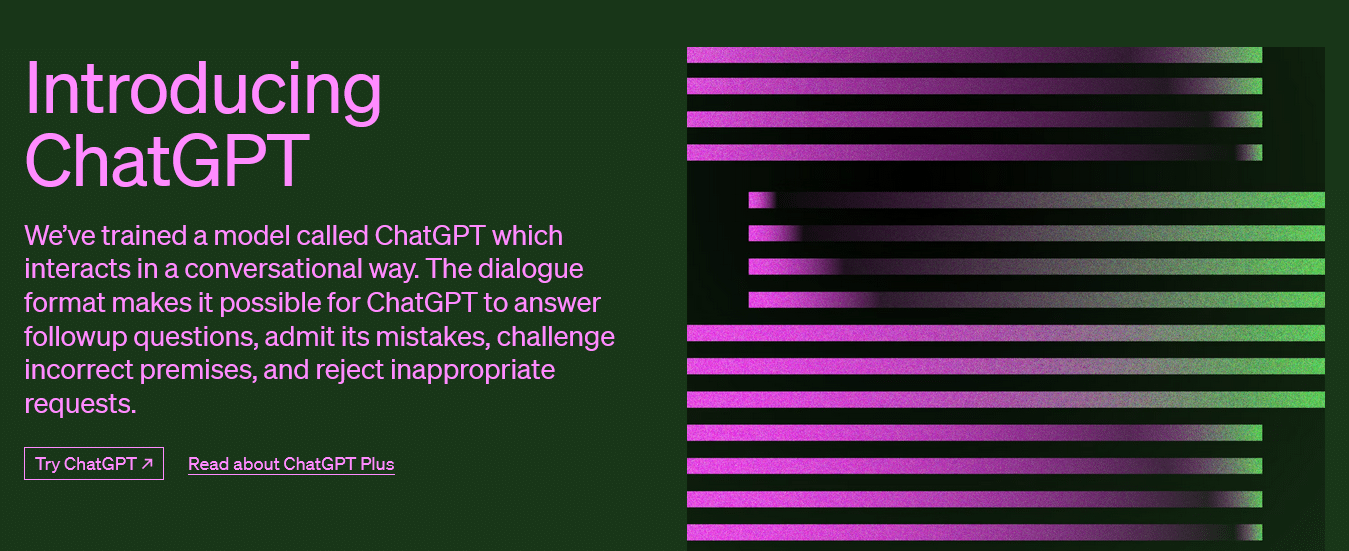
ChatGPT is an AI chatbot developed by OpenAI that is designed to provide human-like conversational interactions. It is built on large language models (LLMs), which are advanced machine learning models that can understand and generate natural language.
The foundation of ChatGPT is the GPT (Generative Pre-trained Transformer) architecture, and the acronym highlights the key characteristics of this AI model:
Generative: GPT models are capable of generating new content based on the patterns and context they have learned from the training data. They can create human-like text that is contextually relevant and coherent.
Pre-trained: The models are pre-trained on vast amounts of text data from diverse sources, allowing them to learn a wide range of linguistic patterns, grammar, facts, and context. This pre-training process forms the foundation for their ability to generate high-quality text.
Transformer: GPT models are built on the Transformer architecture, a neural network model designed for natural language processing tasks. The Transformer architecture employs self-attention mechanisms and parallel processing to efficiently handle large-scale language tasks and generate contextually accurate text.
As an AI-powered natural language processing tool, ChatGPT is capable of understanding and generating text based on the prompts you give it. It has a wide range of applications, from answering your questions to helping you draft content, translate languages, and more.
Open AI used human AI trainers to fine tune the language models and utilized human feedback and reinforcement learning techniques to ensure a best-in-class experience for us all. So, you can expect Chat GPT to provide timely, accurate, and contextually relevant responses to whatever question you ask it. Well, most of the time anyway.
Due to its advanced text-generating abilities, ChatGPT has use in various industries and fields, such as customer support, content creation, programming assistance, and more. It’s an excellent example of the power AI has in transforming our daily lives and work experiences.
Now that you know what ChatGPT is, we’re going to take a look at its history and development.
History and Development of Chat GPT
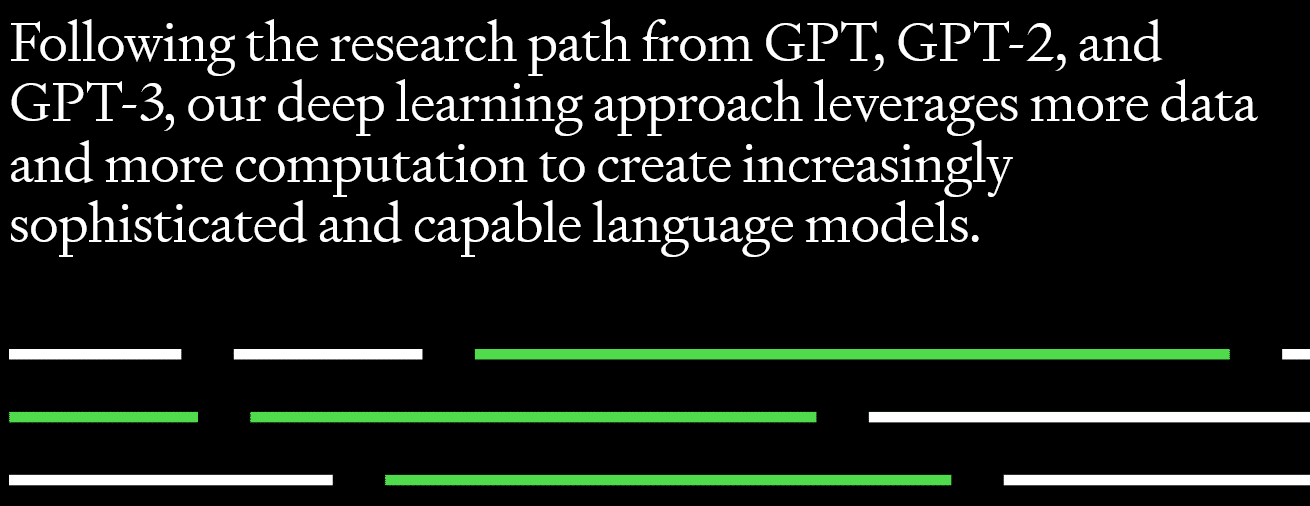
The history of ChatGPT starts in 2018, when OpenAI first introduced its GPT language model. This model was capable of generating human-like responses to questions and conversations, inspiring the creation of ChatGPT.
The GPT series began with GPT-1, which was a promising but limited language model. Its successor, GPT-2, was released in February 2019 and demonstrated significant improvements in language understanding and generation capabilities.
However, it was GPT-3, which was released in June 2020, that truly revolutionized the generative AI landscape with its unprecedented power and performance.
Over time, OpenAI fine-tuned GPT-3 to create GPT-3.5, which is an upgraded iteration and the version of ChatGPT that is available for free on the OpenAI website.
OpenAI officially launched ChatGPT in November 2022 and it was an instant hit. Building upon the success of GPT-3.5, OpenAI introduced GPT-4, an iteration that brought notable enhancements in ChatGPT’s performance, scalability, and overall capabilities.
The evolution of ChatGPT from GPT-3 to the more advanced GPT-3.5 and GPT-4 families stands as a testament to the rapid progress made in generative AI research and development.
Throughout its growth, ChatGPT has benefited from strengthened deep-learning architectures, so let’s take a look at some of the key features of the technology in the next section.
4 Key Features of ChatGPT
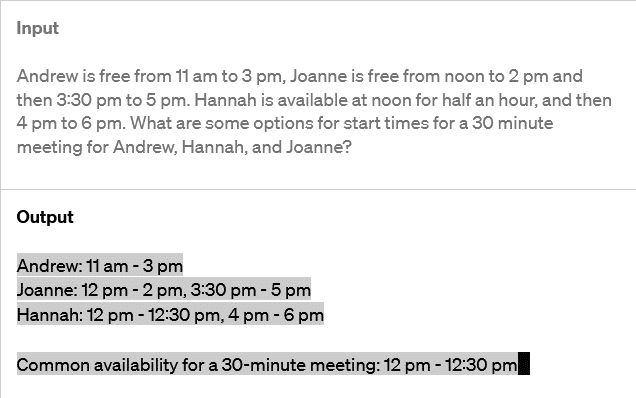
As an advanced language model, ChatGPT exhibits several key features that set it apart from its predecessors and contribute to its effectiveness in a wide range of applications.
In this section, we’ll discuss these key features, highlighting their importance and the impact they have on how ChatGPT responds as well as its capabilities.
1. Advanced natural language understanding
One of ChatGPT’s key components is its ability to understand human language thanks to its underlying large language model. The model’s deep understanding of grammar, syntax, and semantics allows it to produce quality text that closely resembles human-generated content.
ChatGPT’s natural language understanding allows it to effortlessly engage in conversations and interpret questions, comments, and instructions with scary good precision.
2. Contextual Awareness
ChatGPT can retain context from previous conversations to provide more relevant and coherent responses. However, GPT models, in general, have a limited context window that determines how much text they can process and retain at once.
For GPT-3, that context window was 2048 tokens, which roughly translates to around 2,000–3,000 words, depending on the text’s language and structure. According to OpenAI, GPT-4 is much more advanced and can interpret and output up to 25,000 words of text.
Contextual awareness is what enables the model to perform better in a back-and-forth conversation and maintain consistency in its responses.
3. Wide Domain Knowledge
Another significant feature of Chat GPT is its expansive knowledge base. The AI chatbot has been trained on a massive dataset containing text from numerous sources, so it can generate responses on a variety of subjects.
You can engage with ChatGPT on topics that include:
Science and technology: Physics, chemistry, biology, astronomy, computer science, engineering, and more.
Arts and humanities: Literature, history, philosophy, visual arts, music, and performing arts.
Social sciences: Psychology, sociology, anthropology, political science, economics, and education.
Mathematics and statistics: Algebra, calculus, geometry, probability, and statistical analysis.
Medicine and healthcare: Anatomy, physiology, pharmacology, medical conditions, treatments, and healthcare systems.
Business and finance: Management, marketing, accounting, finance, economics, and entrepreneurship.
Law and politics: Legal systems, international relations, political theory, public policy, and human rights.
Pop culture and entertainment: Movies, television, music, sports, celebrities, and popular trends.
Everyday life: Travel, food, hobbies, DIY, relationships, and personal development.
Environment and geography: Climate change, ecosystems, natural resources, physical geography, and human geography.
Note: While ChatGPT has knowledge on a wide range of topics, the accuracy and depth of its understanding may vary depending on the subject and the complexity of the question or task.
4. Scalability and Adaptability
ChatGPT’s architecture and training methodologies allow it to scale well and make it suitable for many applications and industries. The model can be fine-tuned for specific tasks, enhancing its performance and adaptability to various use cases.
While it’s hard to provide exact numbers for how far ChatGPT can scale and adapt due to the many factors involved, such as computational resources, infrastructure, and app requirements, we can make estimates based on the model’s size and training data:
Model size: ChatGPT is built on GPT-4 architecture, and although the exact size of GPT-4 is not publicly disclosed, GPT-3.5, its predecessor, had 175 billion parameters. It is safe to assume that GPT-4 has an even larger number of parameters, allowing it to capture more complex language patterns and provide better performance.
Training data: ChatGPT is trained on massive datasets containing terabytes of text data sourced from diverse domains, such as websites, books, articles, and more. This enables the model to have a vast knowledge base that spans numerous subjects and fields.
Computational resources: Training ChatGPT on such large datasets requires significant computational power. The model is typically trained using high-performance GPUs or TPUs, which are capable of handling the complex mathematical operations involved in training deep learning models.
Fine-tuning: Adapting ChatGPT for specialized work often requires additional training and reinforcement learning on custom datasets that might range in size from thousands to millions of examples, depending on the task and desired performance.
When it comes to scaling ChatGPT for user interactions, the numbers will primarily depend on the infrastructure and optimizations made for deployment.
Theoretically, it should be possible to serve millions of users with the right hardware and software setup, but the exact numbers will vary based on the specific use case and the resources available.
ChatGPT’s key features have contributed to its remarkable success and growing popularity. They not only enable ChatGPT to deliver impressive performance but also make it a powerful tool for transforming the way we interact with technology and opening up new possibilities for AI-driven solutions across various domains.
In the next section, we’re going to take a look at some of those solutions as we cover some real-world applications of ChatGPT.
5 Potential Applications of ChatGPT
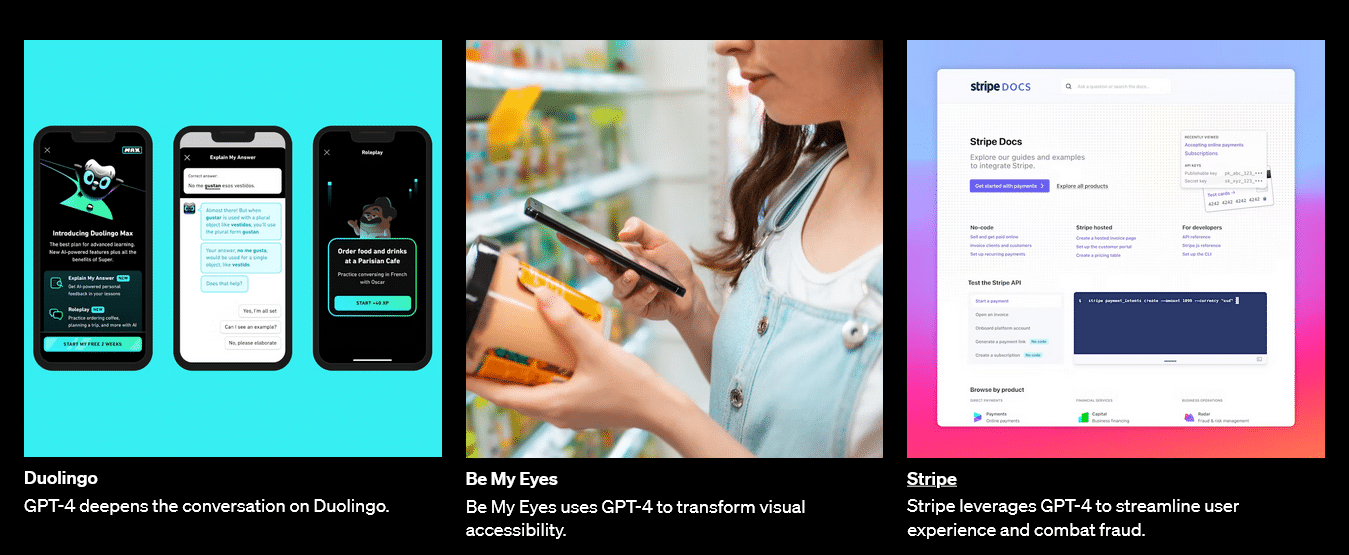
ChatGPT’s advanced language capabilities and wide domain knowledge enable it to excel in various applications across multiple industries. While it’s still a new technology, it could potentially replace human workers in a lot of sectors.
In this section, we’ll explore some applications of ChatGPT. The potential applications are quite vast, but we’ll focus on five main areas.
1. Content Generation
With ChatGPT, you can create high-quality and engaging content for your blog, website, or social media accounts. It can assist with drafting news articles, creating headlines, crafting marketing copy, and even generating topic ideas.
By incorporating keywords and adjusting the output based on your preferences, you can produce content that aligns with your brand and target audience.
2. Chatbots, Virtual Assistants, and Customer Support
By using the ChatGPT API, businesses can create AI chatbots, virtual assistants, and helpdesks capable of human-like conversations.
These advanced chatbots can answer questions, offer recommendations, generate ideas, and even engage in extended interactions. With ChatGPT, your business could streamline processes and improve quality for both internal and external users.
3. Language Translation
The model can be applied to translate text between languages with impressive accuracy, aiding in language learning, communication, and information sharing.
It’s use in this domain is so promising that the language learning platform Duolingo has announced the launch of Duolingo Max, a new subscription tier that uses GPT-4 to give personalized answers and enable learning roleplay.
4. Interactive Gaming and Storytelling
ChatGPT can be integrated into video games or interactive experiences like Dungeons & Dragons to create dynamic and engaging dialogues or narratives.
It can generate story ideas, develop characters, or even create entire fictional worlds, assisting writers and game developers.
5. Education and Tutoring
The model can be used as a tutoring tool, providing explanations, answering questions, or offering feedback on various subjects.
Its potential applications in this domain are vast and it could benefit both students and educators in various ways, such as:
Personalized learning: ChatGPT can help create tailored learning experiences by adapting to the individual needs, interests, and skill levels of students. It can recommend learning resources, provide supplementary materials, or suggest activities that align with students’ learning objectives and styles.
Subject-specific tutoring: The model’s extensive domain knowledge allows it to assist students across a wide range of subjects, such as mathematics, science, history, and language arts. It can provide explanations, answer questions, or offer guidance on specific topics, helping students to better understand and retain information.
Homework assistance and feedback: ChatGPT can support students in completing their homework by providing hints, step-by-step solutions, or constructive feedback on their work. It can also help with proofreading, identifying errors, and suggesting improvements in students’ written assignments.
Study aid and exam preparation: The model can generate quizzes, practice questions, or flashcards to help students review and reinforce their understanding of course material. It can also guide students in creating effective study plans and offer test-taking strategies to enhance their exam performance.
ChatGPT can also assist teachers by generating lesson plans, quizzes, or study materials tailored to individual students’ needs.
These five use cases give a glimpse of the potential of this transformative technology. However, ChatGPT isn’t without limitations. In the next section, we’ll take a look at some of those limitations and challenges.
Want to hear about the future of AI in data? Check out the video below.
5 Limitations and Challenges of ChatGPT
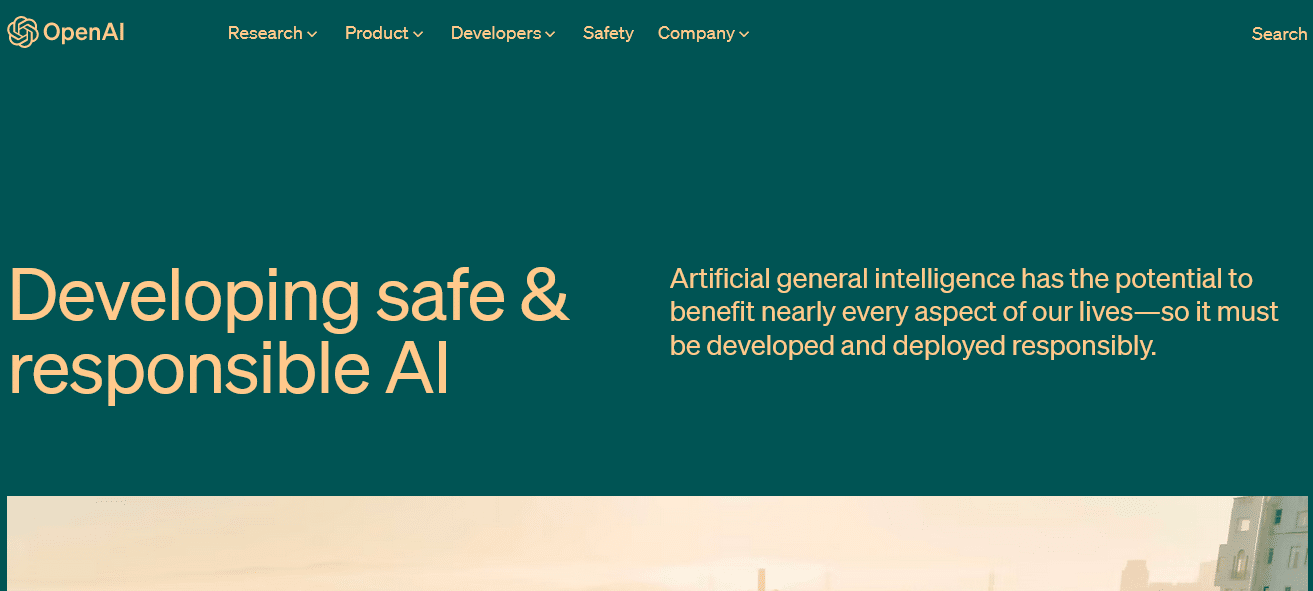
While ChatGPT is an impressive language model with numerous applications, it is not without its limitations and challenges.
Understanding these drawbacks is essential for managing expectations and identifying areas where the model could be improved.
In this section, we will discuss the limitations ChatGPT has, shedding light on its potential shortcomings and the hurdles it faces in certain scenarios.
1. Limited Context Window
ChatGPT’s context window restricts its ability to process and retain context from very long text passages or multi-turn conversations.
This can lead to a loss of coherence and relevance in responses when the context exceeds its capacity.
2. Incomplete or Outdated Knowledge
The model’s training data goes up to September 2021, which means ChatGPT’s responses may not have the latest information on some subjects.
Its knowledge base is also limited by the text data it has been trained on, which may not cover every topic or domain comprehensively.
3. Inability to Verify Facts or Access Real-Time Information
ChatGPT relies solely on its pre-existing knowledge from its training data, which means it cannot verify facts, access real-time information, perform live research, or report on current events.
This limitation can lead to inaccuracies, false positives, false negatives, or outdated information in its responses, making it less reliable for tasks that require up-to-date or fact-checked information.
This is an area where Bing Chat shines because Bing, unlike ChatGPT, includes search engine results. If you’re using ChatGPT to come up with facts, make sure you cross-check the information provided.
4. Overuse of Generic or Excessively Verbose Responses
AI-written text is sometimes overly verbose, generic, or repetitive, which can reduce the quality and effectiveness of its outputs.
This can be particularly problematic in situations where concise or domain-specific answers are required.
5. Lack of Commonsense Reasoning
ChatGPT may struggle with common sense reasoning or understanding implicit knowledge that humans find intuitive.
This can lead to incorrect or nonsensical answers or plausible-sounding but incorrect responses, even when the model appears to be generating coherent text.
ChatGPT has remarkable capabilities in natural language understanding, but as an end user, you should recognize its many limitations so you can make better-informed decisions when using the language model.
Its current limitations also encourage OpenAI researchers to work on further advancements in artificial intelligence language models and enhance the technology’s overall effectiveness and safety.
Beyond its limitations, it’s also important to think of some ethical considerations and potential risks of the technology, which is what we’re to cover in the next section.
Ethical Considerations and Potential Risks of ChatGPT
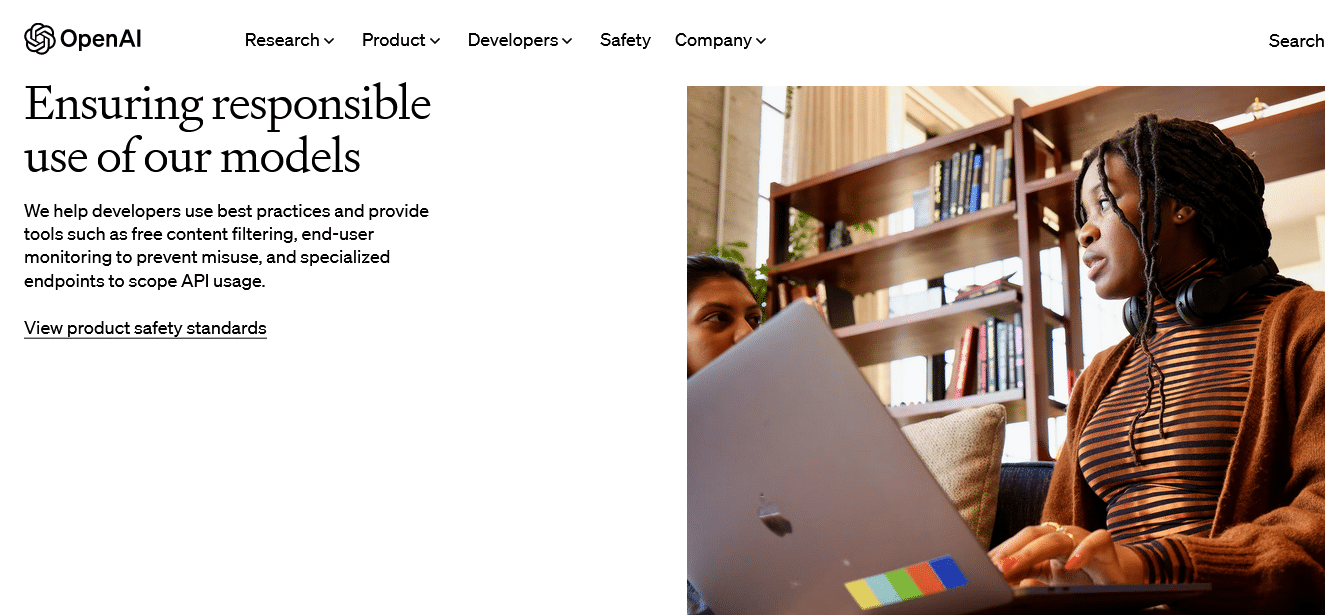
As with any powerful technology, the use of ChatGPT brings about ethical considerations and potential risks that need to be addressed to ensure responsible and safe usage.
In this section, we will explore the ethical concerns associated with a dangerously strong AI and outline the challenges and responsibilities of its users and developers.
1. Bias and Discrimination
ChatGPT may inadvertently learn and reproduce biases present in its training data, leading to outputs that reinforce stereotypes or perpetuate discrimination.
It is crucial for developers to continuously improve the model’s training process to reduce bias and promote fairness in AI-generated content.
2. Misinformation and Manipulation
ChatGPT writes plausible-sounding text with limited knowledge, and that raises concerns about its potential use in spreading false information, misinformation, propaganda, or deepfake content.
Developers and users must work together to implement safeguards and promote transparency to counteract these risks.
[wpforms id=”211279″]
3. Privacy and Data Security
ChatGPT relies on large datasets for training, which may contain sensitive or personal information, raising concerns about data privacy and security.
It’s important that OpenAI collects data that is anonymized and implements robust security measures to help protect end-user privacy and maintain trust in artificial intelligence systems.
4. Overreliance and Accountability
The widespread adoption of ChatGPT may lead to an overreliance on AI-generated content, potentially undermining human creativity and critical thinking.
It may become crucial to establish clear guidelines for responsible AI use and maintain a balance between human and AI-generated content.
In particular, determining accountability in cases of AI-generated content causing harm or legal disputes could be challenging, which highlights the need for clear regulations and ethical guidelines.
5. Economic and Social Impact
The adoption of ChatGPT and similar AI technologies may have significant economic implications. It could replace human workers in certain industries or lead to the centralization of AI resources by large corporations.
Addressing these concerns requires collaboration between stakeholders, including governments, businesses, and communities, to ensure that the benefits of artificial intelligence are distributed equitably and its potential negative impacts are mitigated.
The good news is OpenAI has considered these concerns and has published a charter laying out its mission and goal to ensure the continued development of artificial intelligence systems will benefit all of humanity.
With that in mind, let’s take a look at the future of Chat GPT and what you can expect in the coming years.
Future Developments and Improvements of ChatGPT
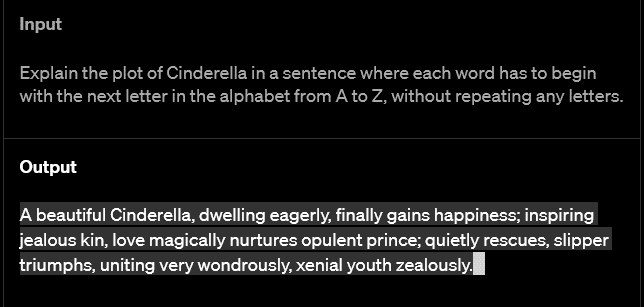
Despite its current limitations and challenges, ChatGPT holds great potential for future developments and improvements that could further enhance its capabilities and address its shortcomings.
In this section, we will explore some of the anticipated new features and potential areas of improvement for Chat GPT, offering insights into the exciting possibilities that lie ahead for language models.
1. Improved Context Understanding and Retention
OpenAI researchers are working on enhancing Chat GPT’s ability to understand and retain context from long text passages and back-and-forth conversations, which will help improve its coherence and the relevance of its responses.
These advancements could make Chat GPT even more effective for complex tasks, such as summarization or dialogue-based applications.
2. Enhanced Commonsense Reasoning
Future iterations of Chat GPT may incorporate better common sense reasoning capabilities, enabling the model to handle implicit knowledge and intuitive understanding more effectively.
This would result in more accurate and meaningful responses with less follow-up questions, even in situations that require an understanding of human experiences or tacit knowledge.
3. Bias Reduction and Fairness
Developers plan to continue to focus on reducing bias and promoting fairness in ChatGPT’s outputs by refining the training process, data curation, and model evaluation.
These efforts will help ensure that AI-generated content is more representative, inclusive, and less prone to perpetuating harmful stereotypes or discrimination.
4. Real-time Information Access and Fact-Checking
Future developments in AI language models may include the ability to access real-time information or perform live research, allowing ChatGPT to provide more accurate and up-to-date responses.
Integrating fact-checking capabilities could also enhance the reliability and trustworthiness of the information generated by the model.
5. Improved Adaptability and Customization
Advances in transfer learning and fine-tuning techniques will enable ChatGPT to be more easily adapted to specific tasks, domains, or industries, further expanding its range of applications.
Improved customization options will allow users to tailor the model’s behavior more effectively, ensuring that AI-generated content aligns with their unique requirements and preferences.
The future of ChatGPT is full of promise, with anticipated developments and improvements set to overcome current limitations and enable AI language models like ChatGPT to become even more versatile, powerful, and effective tools for a wide range of applications.
By continuing to invest in research and development, the AI community can unlock the full potential of language models and drive the next wave of innovation in natural language processing and beyond!
Final Thoughts

As you now know, ChatGPT is a cutting-edge language model built on the GPT-4 architecture that has demonstrated remarkable capabilities in natural language understanding and generation.
Its wide range of uses, from content generation and customer support to education and tutoring, showcases the transformative potential of AI systems and generative AI tools in our daily lives.
Despite its many advantages, it is crucial to acknowledge the limitations and challenges associated with ChatGPT, such as limited context retention, incomplete or outdated knowledge, bias, and lack of common sense reasoning.
Also, addressing the ethical considerations and potential risks, including discrimination, misinformation, privacy, and economic impact, is essential to ensure the responsible and safe use of AI technology.
The future of ChatGPT is bright, with ongoing research and development paving the way for improvements in context understanding, common sense reasoning, bias reduction, real-time information access, and adaptability.
By continuing to innovate and address the challenges faced by AI language models, humanity could harness the power of ChatGPT and its successors to revolutionize the way we communicate, work, learn, and interact with the digital world!
FAQ
1. How big a deal is ChatGPT?
ChatGPT is a pretty big deal. It’s a groundbreaking development in the tech world that will impact numerous industries and applications. Its advanced natural language understanding and generation capabilities have opened up new possibilities in content creation, customer support, education, and many other fields.
2. What does the “GPT” stand for in ChatGPT?
GPT stands for Generative Pre-trained Transformer. It refers to the architecture ChatGPT uses to understand the context and relationships between words in a sentence, leading to more coherent and contextually relevant language generation.
3. What is ChatGPT trained on?
ChatGPT learns from a huge amount of text found in places like websites, books, and articles. This helps it understand how language works, including grammar and context, and learn about many different subjects. Thanks to this training, ChatGPT can create text that sounds like it was written by a person, making it a helpful tool in many areas and jobs.
4. What is ChatGPT used for?
ChatGPT is used for various tasks that involve language, such as article writing, customer support, and language learning. Its ability to understand and create text that sounds like it’s written by a person makes it a valuable tool in many fields, including education, business, and entertainment. ChatGPT helps users save time, improve communication, and generate creative content in a wide range of applications.
5. What makes ChatGPT stand out?
ChatGPT stands out because of its ability to generate human-like responses across a wide range of topics. It showcases impressive language understanding and can produce high quality relevant responses. Also, its fine-tuning process, which involves human feedback, enhances its safety and usefulness, making it a valuable tool with many uses.
6. Is ChatGPT free to use?
ChatGPT 3.5 is a free service that can be accessed by anyone on the OpenAI website. Its next iteration and more advanced chatbot, GPT-4, is only available to subscribers for a monthly fee. Subscribers also get priority access to new features.

